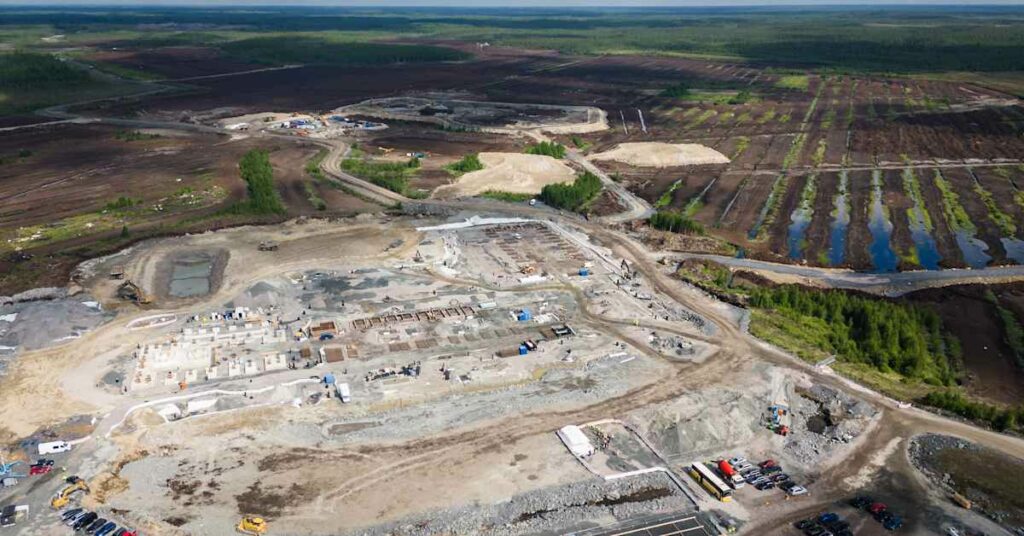At the moment, no European country produces lithium, which is what powers electric vehicles, smartphones and countless other electronic devices and gadgets.
But, the EU has an ambitious goal to increase its self-sufficiency in the sourcing of important metals. In the case of lithium, the EU has called for a self-sufficiency rate of 10 percent.
While that goal might not seem enormous, the fact remains that no one in Europe is producing the highly sought-after metal yet.
That is expected to change in 2026, when mining firm Keliber begins operations in Finland’s region of Central Ostrobothnia.
As the first lithium producer in Europe, the firm expects that it will produce 15,000 tonnes of battery-grade lithium hydroxide per year.
Last year, Europe imported around 50,000 tonnes of lithium hydroxide, which is used in electric vehicle (EV) batteries.
But according to Keliber’s CEO, Hannu Hautala, the automotive industry’s demand for lithium is enormous.
“According to a research institute, demand [for lithium hydroxide] will rise to 550,000 tonnes in 2034. No one knows what the outcome will be, but we can see that the electrification of vehicle traffic is continuing. There are no indications that automakers are going back to internal combustion engines,” Hautala said.
A single EV battery contains several kilograms of lithium hydroxide or lithium carbonate.
Cleaning up process
Given the increasing demand for lithium, efficient extraction of the metal after it is mined is crucial — which is what a project at the state-owned VTT Technical Research Centre of Finland aims to do.
The project, known as Lithos, is working on more efficient and sustainable ways of extracting lithium as well as increasing self-sufficiency and promoting the emergence of the new industry in Europe.
The mining operations are located at deposits in Syväjärvi, Rapasaari, Länttä and Outovesi.
During the blasting phase of quarry mining, ore is separated from the surrounding rock, according to Hautala.
“That’s the phase where waste first happens,” he explained.
Once the ore is extracted, it will be placed in an automatic sorter which further separates minerals.
Then the mined materials will be further processed at a plant in Kaustinen and then head to a lithium hydroxide refinery in Kokkola. Keeping equipment precisely and appropriately adjusted plays a key role in extracting as much lithium as possible.
Other European countries with lithium deposits include Serbia, Portugal and France. But one factor that can potentially prevent such mining is public opinion about it.
More lithium means more mining
According to VTT researcher Päivi Kinnunen, there is a bit of a disconnect among people about lithium mining.
“There’s a bit of a contradiction — we want [lithium battery-powered] products but maybe don’t understand that means more mines,” Kinnunen said.
Most of the world’s lithium is mined in Australia and Canada, while it is also extracted from salt flats in Chile.
The environmental impacts involved in mining plays a major role in people’s opinions about the practice.
The enrichment phase of lithium production involves the use of a significant amount of water. After the water is used, it will then be purified and returned to the environment.
VTT’s Lithos aims to save 90 percent of water consumption and cut carbon dioxide emissions significantly, compared with current production practices in Asia.
“The less water we have to use, the less we have to purify. So, it pays to minimise water use,” Keliber’s Hautala said.
VTT’s Lithos project started about three and a half years ago, with 10 organisations participating in the effort, four of which are Finnish.
Besides Keliber, another key player in Lithos is minerals processing equipment firm Metso. The EU has pledged seven million euros towards the project.
1.58pm: Corrected spelling of Syväjärvi and Länttä.
Users with an Yle ID can leave comments on our news stories. You can create your Yle ID via this link. Our guidelines on commenting and moderation are explained here.
Source link : http://www.bing.com/news/apiclick.aspx?ref=FexRss&aid=&tid=66f54ac7686947289884f910b3a13910&url=https%3A%2F%2Fyle.fi%2Fa%2F74-20114133&c=13455011495270479826&mkt=de-de
Author :
Publish date : 2024-09-26 03:30:00
Copyright for syndicated content belongs to the linked Source.
